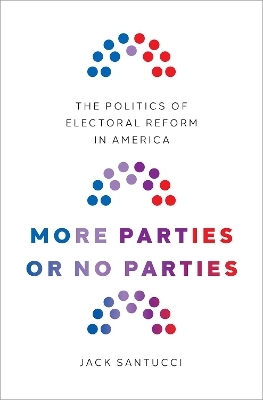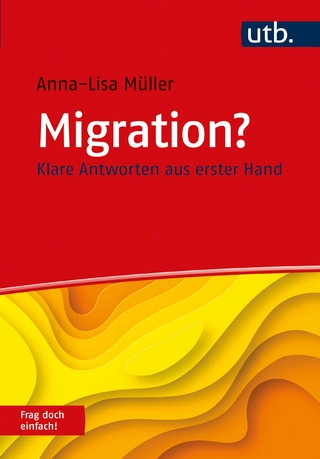
More Parties or No Parties
The Politics of Electoral Reform in America
Seiten
2022
Oxford University Press Inc (Verlag)
978-0-19-763065-5 (ISBN)
Oxford University Press Inc (Verlag)
978-0-19-763065-5 (ISBN)
Americans want electoral reforms so that they can have more choice in elections. Recent surveys show that 20 to 50 percent of Americans are open to a new electoral system, while demand for a third party has crept upward since Gallup began asking in 2003. More Americans now call themselves "independent" than identify with either of the major parties, but what happens when Americans try to reform their way out of a two-party system?
So far, demand for reform has found footing in a push for ranked-choice voting. In More Parties or No Parties, Jack Santucci traces the origins and performance of proportional representation in US cities, the reasons for repeal in all but one case, and discusses the implications of this history for current reform movements in US cities and states, as well as at the national level. In a two-party system, reform requires appealing to the group that wants to "get the parties out of politics" (or, in modern terms, to "reduce polarization"). This leads to ostensibly nonpartisan reform packages, yet party-like formations emerge anyway, as voters and governments need to be organized. However, such reform is not stable and has tended to make voting difficult for everyday people.
Introducing a new shifting-coalitions theory, Santucci argues that electoral reform is likely in periods of party-system instability. The players, according to this theory, are politicians and allied interest groups, motivated to get or keep control of government. Reform can be used to insulate a coalition, dislodge a coalition in power, or deal with noncommittal "centrists." The theory also suggests why reform happens, illuminates why reforms take the shapes that they do, and shows what it might take to make a government reform itself. Using roll-call, election, and other archival data, the book answers several questions: why electoral reforms were adopted, how they worked in practice, why they were repealed, and why only "ranked-choice" was considered in the first place. Drawing on extensive research in cities with experience of proportional representation, Santucci provides a timely and insightful theory of electoral reform with advice for the next generation of reformers.
So far, demand for reform has found footing in a push for ranked-choice voting. In More Parties or No Parties, Jack Santucci traces the origins and performance of proportional representation in US cities, the reasons for repeal in all but one case, and discusses the implications of this history for current reform movements in US cities and states, as well as at the national level. In a two-party system, reform requires appealing to the group that wants to "get the parties out of politics" (or, in modern terms, to "reduce polarization"). This leads to ostensibly nonpartisan reform packages, yet party-like formations emerge anyway, as voters and governments need to be organized. However, such reform is not stable and has tended to make voting difficult for everyday people.
Introducing a new shifting-coalitions theory, Santucci argues that electoral reform is likely in periods of party-system instability. The players, according to this theory, are politicians and allied interest groups, motivated to get or keep control of government. Reform can be used to insulate a coalition, dislodge a coalition in power, or deal with noncommittal "centrists." The theory also suggests why reform happens, illuminates why reforms take the shapes that they do, and shows what it might take to make a government reform itself. Using roll-call, election, and other archival data, the book answers several questions: why electoral reforms were adopted, how they worked in practice, why they were repealed, and why only "ranked-choice" was considered in the first place. Drawing on extensive research in cities with experience of proportional representation, Santucci provides a timely and insightful theory of electoral reform with advice for the next generation of reformers.
Jack Santucci is Assistant Teaching Professor of Politics at Drexel University, focusing on American party politics and electoral systems.
Acknowledgements
Preface
1. Forcing Reform onto a Two-Party System
2. Party Government and Electoral Reform
3. From More Parties to No Parties
4. Spreading the Reform Template
5. Rediscovering Party Government
6. The Price of Coalition
7. Legislative Limbo, Polarizing Repeal
8. More Parties or No Parties?
Appendix A: Repeal Coalitions and Candidate Entry
| Erscheinungsdatum | 25.08.2022 |
|---|---|
| Verlagsort | New York |
| Sprache | englisch |
| Maße | 237 x 164 mm |
| Gewicht | 517 g |
| Themenwelt | Sozialwissenschaften ► Politik / Verwaltung ► Staat / Verwaltung |
| Sozialwissenschaften ► Politik / Verwaltung ► Vergleichende Politikwissenschaften | |
| ISBN-10 | 0-19-763065-0 / 0197630650 |
| ISBN-13 | 978-0-19-763065-5 / 9780197630655 |
| Zustand | Neuware |
| Informationen gemäß Produktsicherheitsverordnung (GPSR) | |
| Haben Sie eine Frage zum Produkt? |
Mehr entdecken
aus dem Bereich
aus dem Bereich
Organisationen steuern, Strukturen schaffen, Prozesse gestalten
Buch | Softcover (2024)
Rehm Verlag
38,00 €


